Core Stones
Seven Stones
There are seven of these core stones, rolling around three individual oceans. These oceans are divided by their pressure and climate, and therefore have extraordinarily different species living in them that are adapted to different oceans. There is one core stone found in the Inner Ocean, two in the Gelatinous Ocean and four in the Outer Ocean.
Each of the seven core stones are said to be inhabited by a legendary monster of gigantic proportions. These animals are thousands of kilometres wide, and take up much of the space inside the core stones. They are responsible for the gravitational pull of the planet, through gravitational magic. If a person not native to the planet were to swim through Dave, they'll find that core stones create a gravity very similar to lots of planets. Despite there being water, one can walk along the core stones with ease, as if the atmosphere was air.
Brim Stone
The Brim Stone is the only core stone found in the Inner Ocean. It is held together mostly by the extreme pressure, as the entire "stone" is actually more a ball of sulphur dust, with various other materials mixed in. The Brim Stone measures 61,490 kilometres in diameter.
The Brim Stone is inhabited by few species, since most animals that live in the Inner Ocean are of great size and prefer to swim in the open waters. Brass whales often swim along the surface of the Brim Stone, engulfing large quantities of the sulphur and excreting it into the atmosphere, poisoning the waters as it sinks back to the surface of the stone.
Sand Stone
The Sand Stone is the larger of the two core stones in the Gelatinous Ocean. Unsurprisingly the core stone is made mostly of sandstone, where it gets its name. The Sand Stone is the largest of the core stones, at a whopping 73,293 kilometres in diameter.
The Sand Stone Monster is one with an interesting anatomy. With an upright appearance, the Sand Stone Monster has a large abdomen where its eyes are located, along with a false eye pattern. This raises the question why, since typically animals have false eyes to scare away predators, and what is bigger than the Sand Stone Monster? Is it hidden in the Sand Stone because of a larger predator?
These questions were raised during the discovery of the Sand Stone Monster, after davites explored various caverns and tunnels in this core stone, and discovered this creature in a deep sleep.
Moon Stone
The Moon Stone is most famous for its unique properties, identical to moonrock, hence the name. When pressure is applied to the rock that makes up the Moon Stone, the rock becomes unbreakable, otherwise the rock is liquid. The pressure of the Gelatinous Ocean is what keeps the Moon Stone in a near-spherical shape.
The Moon Stone has the largest population of davites, with twice the amount than the Sand Stone. Davites are the jellyfish-like sophonts of Dave, and are an extremely intelligent species that have travelled far beyond their solar system.
The Moon Stone Monster is the only one to not be in a deep sleep. In fact, the creature's tentacles often emerge from the Moon Stone, terrorising local populations. The monster is known as the Thousand Arms, a reference to the number of limbs this creature seemingly has.
The Moon Stone is home to an incredible variety of deep-sea plants, coral, and other animals. Many species share symbiotic relationships, such as the blue fingerworm and toadstool coral. The blue fingerworm lives in the centre of a toadstool coral, which provides protection, while its spherical pink appendage catches plankton, some of which is given to the coral.
Cobble Stone
The Cobble Stone is the smallest of the four core stones in the Outer Ocean. The Cobble Stone has a texture that resembles cobblestone, hence the name. Small pebbles are laid in a lattice that coats the entire stony sphere, while small plants grow in between and absorb the nutrients from the creature that lies below.
It's interesting, nobody can quite figure out the size of the creature inside. The people of the planet are aware that some giant creature is inside, but there is no entrance to the hollow centre. The ground feels slightly warm, but that's nothing to worry about. Occasionally giant legs stick out of the ground, but that's nothing to worry about either. When have giant legs magically appearing ever been a problem?
Is it a little odd that the entire core stone resembles a shell? Yes. Do the giant legs seem out of place? Maybe, yes. But it's a lot of effort to study this core stone when there are more pressing concerns, like the inevitable end of life on the planet and the solar system as the sun is being devoured by some giant eight-legged monster.
Obsidian Stone
The Obsidian Stone is considered one of the more stunning core stones. Its surface is a mixture of obsidian and other natural glasses, all blended together to form a brilliant array of prismatic colours. The Obsidian Stone surfaces most often, surfacing once an orbit. It is used as a time marker for various civilisations on different moons that orbit at the same speed.
The Obsidian Stone is inhabited by a wicked monster. The giant sea worm has an uncontrollably large mouth that is said to expand to an infinite size to swallow whatever it pleases. The Davites pray that this creature never emerges, because when it does its endless hunger can never be satisfied.
On the surface of the Obsidian Stone are thousands of flittering glowfish, a species of fish that glow a bright green. Even swimming a few feet away from them cannot save you from their intoxicating aroma, which will send you into a deep sleep within minutes.
Meteor Stone
The Meteor Stone is the only one of the core stones not native to Dave. It crashed into the planet after hurtling through space, and quickly got caught in an orbit thanks to the speed it was flying at. The Meteor Stone crashed into the planet approximately 60,000 years ago, and about a hundred years later, a large monster emerged from the Inner Ocean, swam through the Gelatinous Ocean, and nestled within the Meteor Stone.
The monster greatly resembles a large sea slug, with feather like appendages. The monster has never once left the Meteor Stone, but it was sighted when it swam from the Inner Ocean all the way to the core stone to nestle inside.
Aura Stone
The Aura Stone gets its name from the giant radiant aura that surrounds it. The stone is radioactive, but rather than harming those who get close, people are magically healed. The Aura Stone is a place that davites frequently migrate to on annual new year's healing trips, to revitalise themselves for the upcoming year.
The Aura Stone is said to be inhabited by a giant ray of sorts, with a long, whip-like tail equipped with razor-sharp blades, capable of slicing the hardest metal.
Studying, Analysis & Folklore
While the looming threat of the planet being destroyed is the davite's main problem at the moment, a small portion of the scientific community are dedicated to studying what on Dave is lurking inside all of these core stones. Incredibly large heat signatures have been detected in all seven of the core stones, which leads scientists to believe there is a large lifeform in each of them, but the exact anatomy of the creatures are not yet determined. Simple sketches, seen above, have been drafted of what these creatures could look like.
Many of these creatures have been blown out of proportion by communities, people manifesting these animals into horrifying monsters that could doom the entire davite species. The most prevalent example is the Thousand Arms, a creature whose arms can sometimes be seen waving around from the comfort of one's home on the Moon Stone. Many believe that this monster will be the end of civilisation, when it inevitably wakes up from its slumber and tears apart its core stone.
The Cobble Stone is unique among core stones, for its heat signatures extend throughout the entire stone. If one were to put their ears to the ground, a faint pulsing can be heard and felt, as well as a small amount of heat. Many question whether or not the Cobble Stone is a creature in itself; a preposterously large hermit crab of sorts.

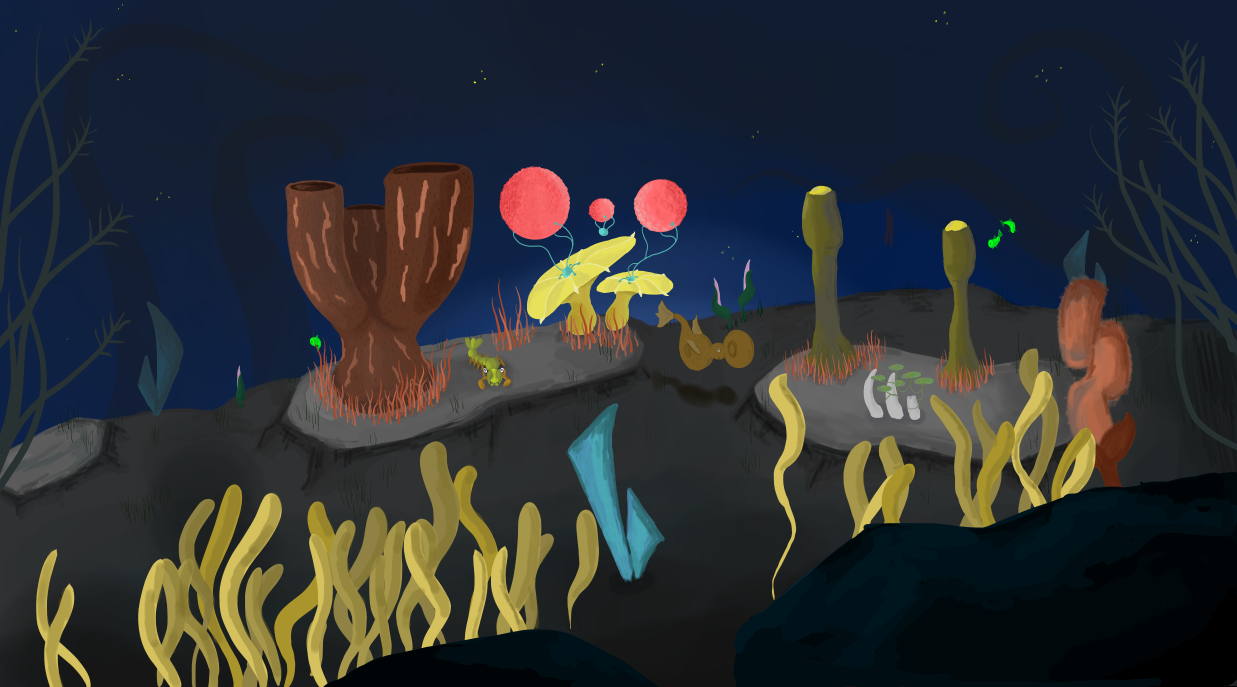
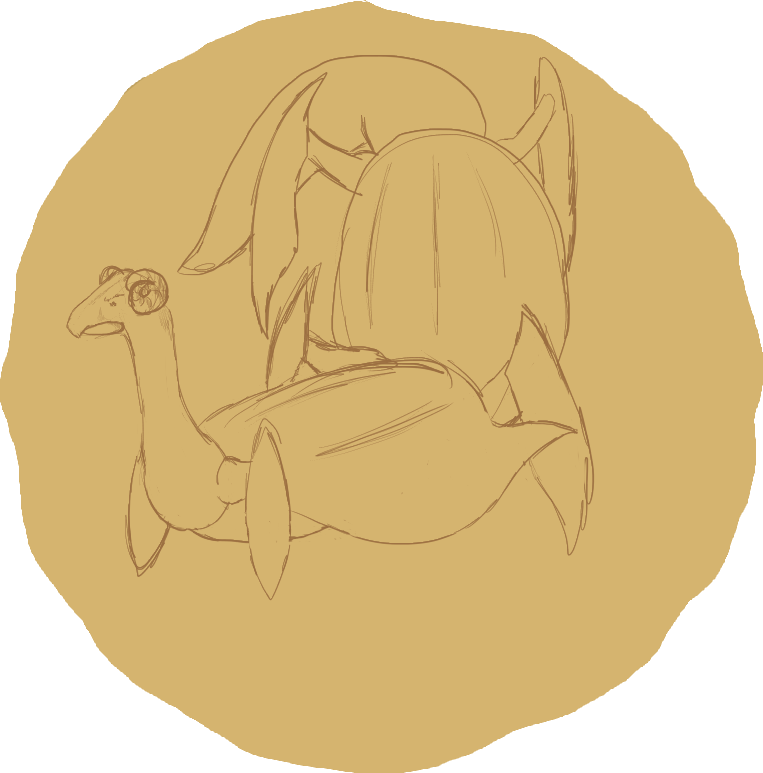
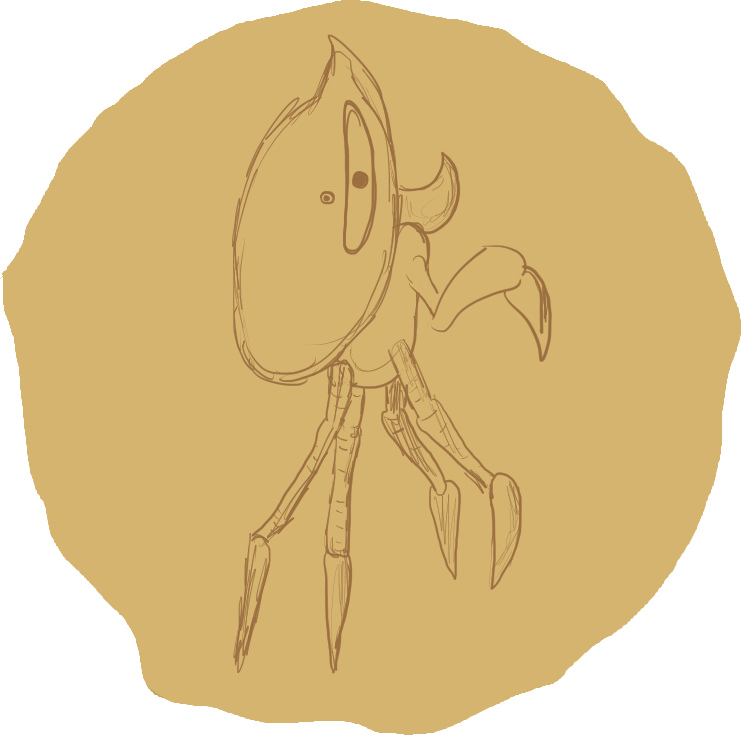
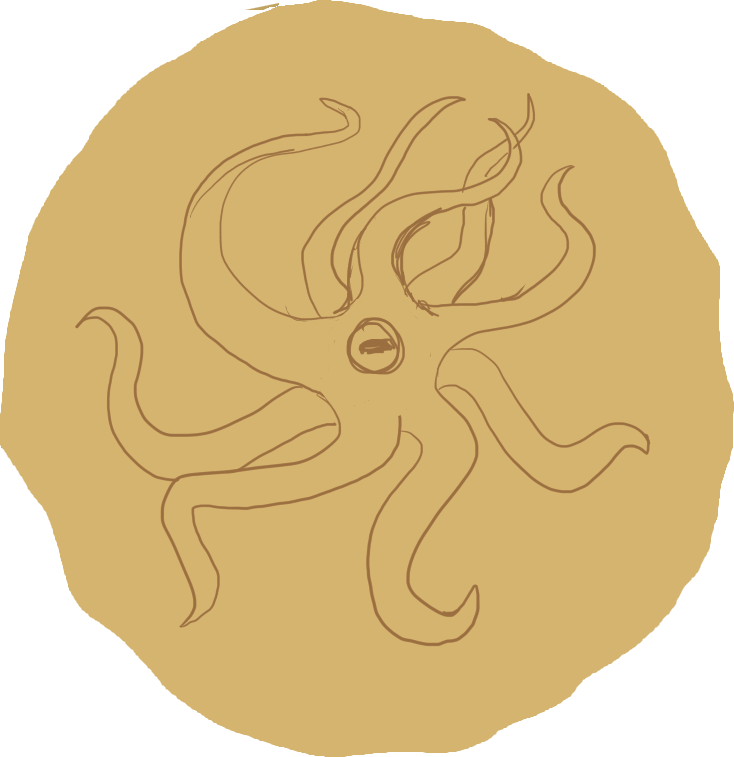


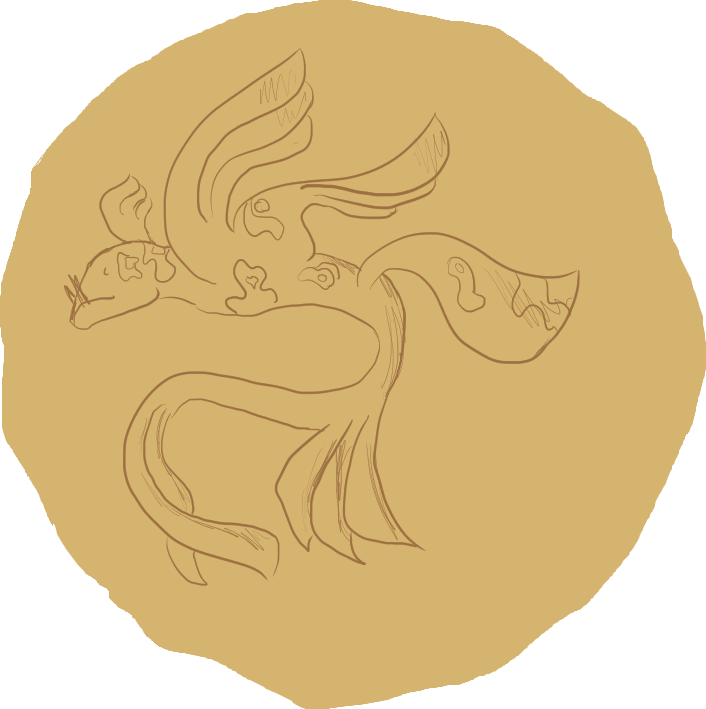
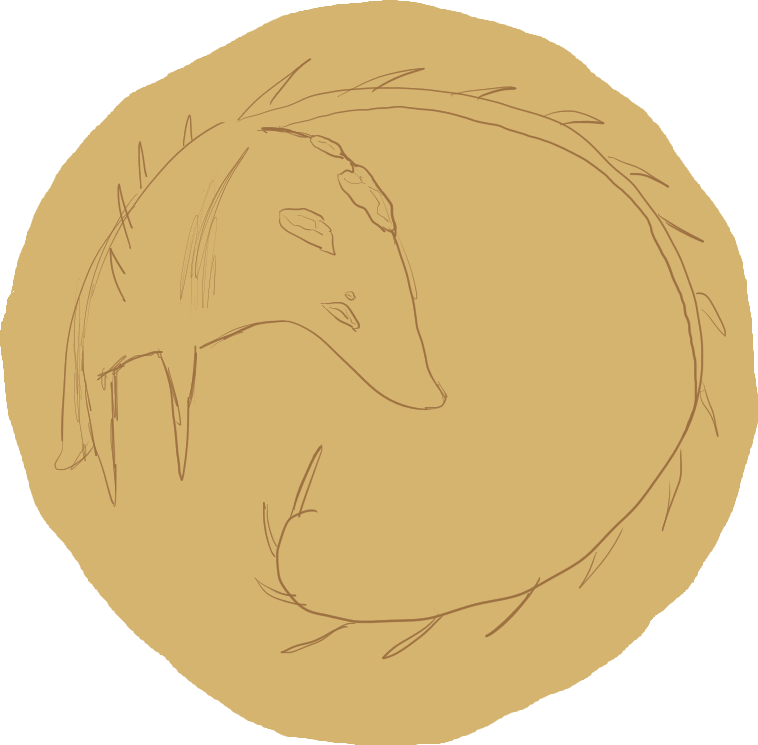



I thought the Gelatinous Ocean would have been a plane spanning Gelatinous Cube, haha.